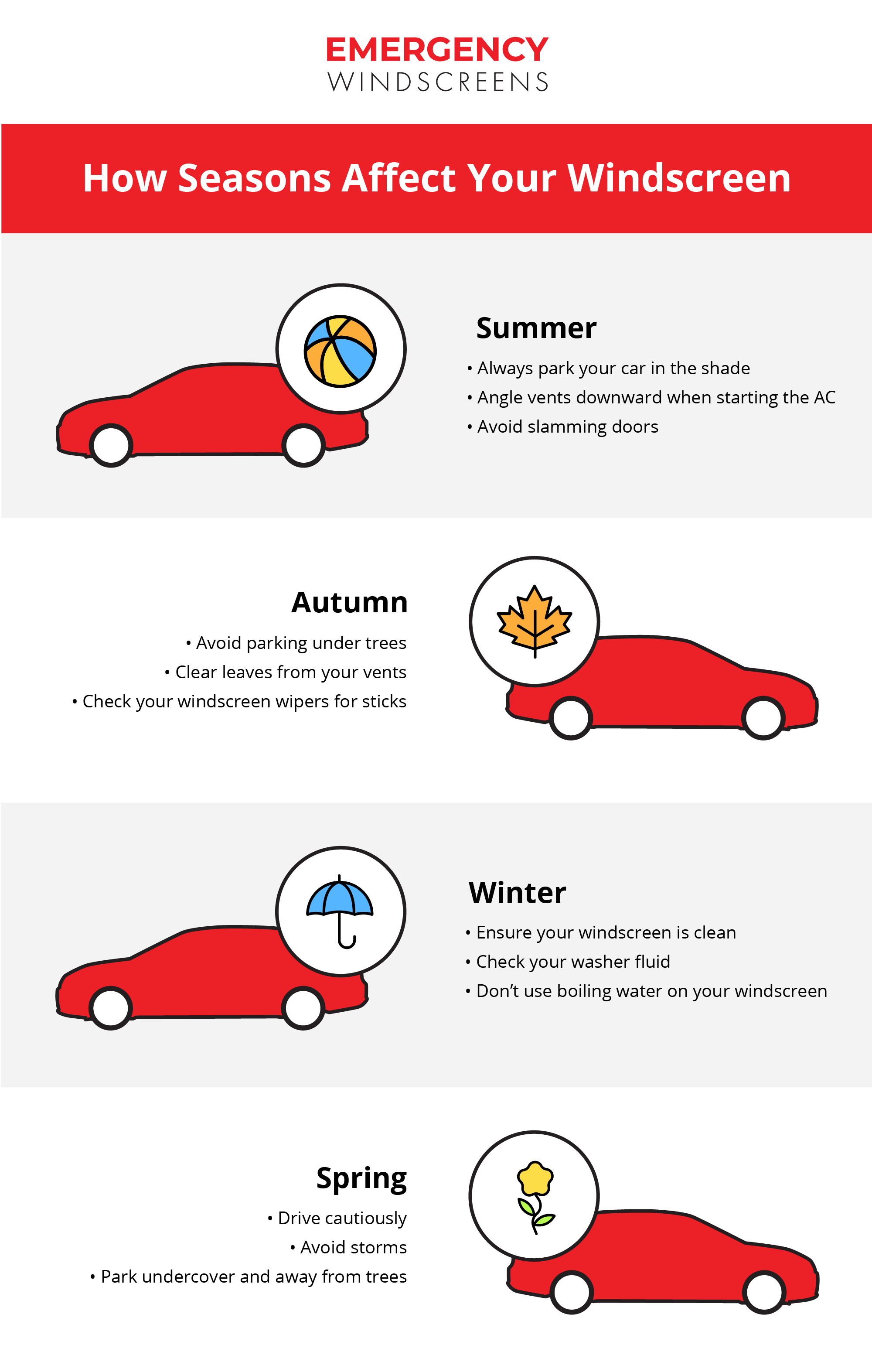Your windscreen plays one of the most crucial roles when it comes to protecting you and your occupants. It provides structural support for the roof, as well as protecting you from road debris and weather. Which is why it is vital to take care of your windscreen and autoglass.
Seasonal changes not only affect living things, they also affect your windscreen and can impact the way it functions. There is a wide range of weather changes that happen throughout the year, from the cold of winter to the scorching hot Australian summers. But few people understand how these changing weather patterns affects their windscreen. Sometimes the mere change in weather can turn a small chip into a dangerous crack during an accident, which is why it is always important to have any windscreen damage repaired as soon as you see it. Today we are going to discuss how seasonal changes can affect your windscreen.
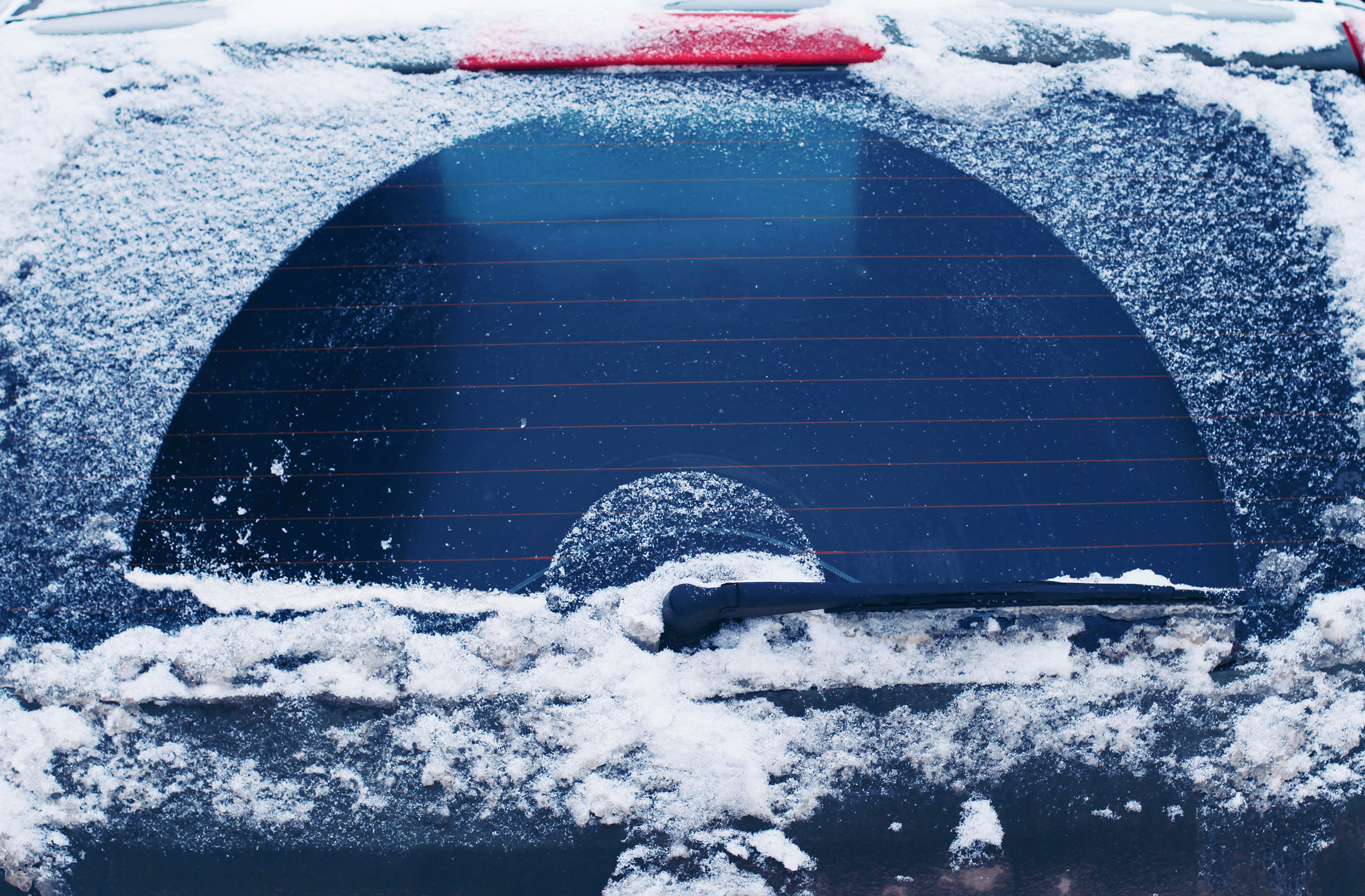
Why Do Temperature Changes Matter?
Your windscreen is generally built to withstand a variety of weather conditions like rain, sleet, hail, high winds, and high temperature. But sometimes, even the most well made windscreens are vulnerable to chips, cracks, and holes, especially in extremely weather conditions. This can lead to windscreen repairs and replacements.
Windscreens are not only damaged by pebbles and rocks. While pebbles and road debris certainly do some severe damage at high speeds, it can be the temperature inside and outside the car that can put the glass at the greatest risk. It can also put pre-existing cracks and holes to spread more rapidly.
How Seasonal Changes Can Affect Your Windscreen
A cracked, chipped, or broken windscreen can occur at any time of the year and anywhere. Below are the most common reason your windscreen might be damaged by season, along with some tips to avoid seasonal windscreen damage!

Summer Windscreen Damage
The summer sun isn’t just a welcome reprieve from winter and doesn’t just give you a nice tan. It can actually quite heavily affect your windscreen. It might cause the windscreen to crack a little or show signs of chipping. Even though the summer heat is partly to blame, that is not the sole reason for windscreen damage in summer. We all jump into the car on the hot day and immediately reach for the AC, cranking it up high to cool down the hot interior of the car – and cool ourselves down in the process. But this can be the worst thing you can do. The sudden drop in temperature and the uneven temperature gradient across the windscreen can cause it to crack and break, especially if a crack or chip is already evident.
Summer also means we are out and about more, which means we’re on the road more often. Which leads to an increase in other cars on the road. This also leads to a higher chance of a chipped or broken windshield due to accidents or debris hitting the glass. Even a small chip should be repaired as soon as possible as it can quickly turn into a crack or worse in the summer heat.
Precautions
- Always park in the shade or partial shade where possible to lessen the need for the AC in summer
- Open your windows when you start driving to let the airflow cool the car down naturally, first, before using the AC. This allows the temperature to normalise better.
- Start with the temperature on a low setting and raise it slowly as needed.
- Angle vents downward, away from the windshield, or just use the floor settings to start with.
- Avoid slamming doors as this will put added pressure on the windshield.
- Have all damage repaired as soon as you can see it.
Autumn Windscreen Damage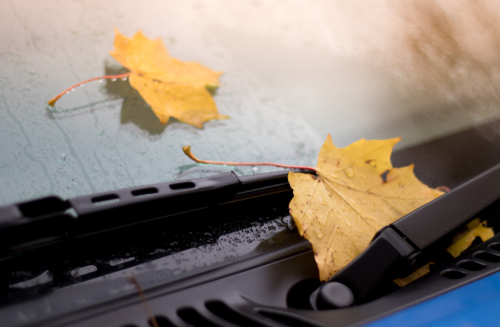
Autumn is a gorgeous season, with stunning falling leaves, the russet landscape, and cooling weather. But it’s not a great season when it comes to the safety of your windscreen. If you have been parking your car in the shade of a tree during summer, now is the time to stop. Autumn is not just the time when leaves fall off trees. Branches, twigs, seed pods, and nuts all tend to start dropping during autumn. These can be hazardous to your autoglass. Falling objects can damage your windscreen if they hit with enough force. Hail and storms are also more common during autumn , which can also cause damage to your windscreen.
Precautions
- Avoid driving in storms and hail storms.
- Park undercover where possible.
- Avoid parking under trees.
- Have chips and cracks repaired whenever possible.
Winter Windscreen Damage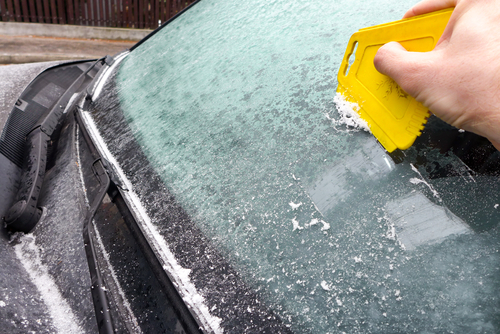
Winter is quite possibly be the worst season for your car and windscreen. From freezing weather to dangerous roads, there are several ways your windscreen can be damaged. Compared to most of the world, Melbourne experiences fairly mild winters. However we get our fair share of hail and rain in winter. This not only creates a road hazard but a windscreen hazard as well. A dirty, scratched up windscreen can make it even more difficult to see during a heavy downpour. And, just like summer, having a vast difference between the interior and exterior of the car can cause lots of damage. In cold weather, of course we want to jump in the car and warm it up as soon as possible. But blasting this heater can cause the windscreen to chip and crack, especially if it is already damaged.
Precautions
- Slowly warm your car up rather than blasting the heater on immediately.
- Start with the floor vents then work your way up.
- Ensure your windscreen is clean. (For further details, see what we recommend for keeping your windscreen clean and clear.)
- Park in safe areas, away from trees, and undercover where possible.
- Avoid driving in in storms and hail whenever possible.
- Always ensure your washer fluid is full to avoid scratches to your windscreen in winter.
- Make sure your wiper blades are working properly to wipe away rain and other debris.
- Ensure your windscreen is repaired as soon as you notice a chip or a crack.
- If your windscreen is constantly fogging, have the windscreen seal checked for gaps and deterioration.
- Never use boiling water to clear frost or ice off your windscreen! Instead, this is what we recommend when it comes to frost.
Spring Windscreen Damage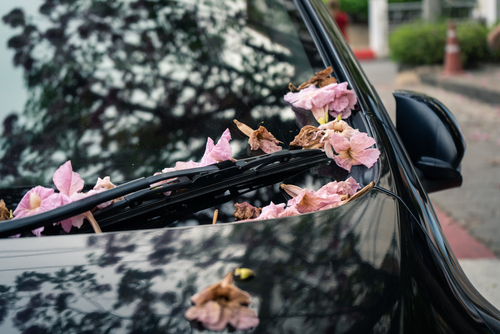
Like autumn, it is difficult to predict what spring might bring for your windscreen. Warm weather is as likely as violent storms. This means your car is still vulnerable to high winds, falling debris, and storms. While spring, with flowers in bloom and leaves starting to green again can be a feast for the eyes, it’s not so much when your windscreen gets cracked! Storms and high winds are a red flag for your windscreen, while wet roads are a risk for driving and accidents, as well as debris.
Precautions
- Drive cautiously
- Avoid driving in storms
- Park undercover, away from trees, where possible
Are you looking for Australia’s most reliable windscreen and autoglass specialists? Quality Fit Windscreens offers fast, mobile repairs and windscreen replacements to your vehicles, no matter where you are. Let us get you back on the road safely, today!

